Modern Sashiko Embroidery for Men's Fashion
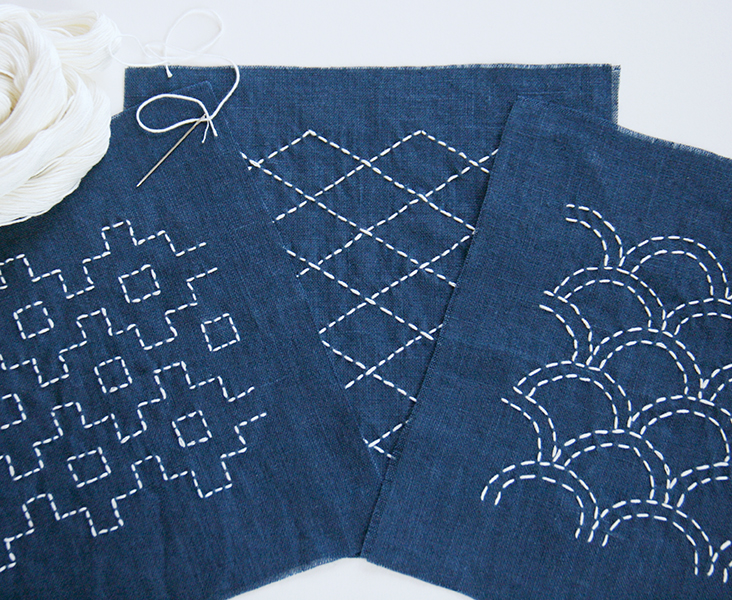
Sashiko is a form of Japanese folk embroidery using elementary running stitches to create repeating geometric shapes and intricate patterns. Literally significant "fiddling stabs", sashiko was originally used for repairs and reinforcements. Today, the traditional patterns take evolved into a more than decorative form and are often used to create beautiful handmade designs on table linens, clutches, tote bags and habiliment such as dresses, jackets etc.
In this tutorial we will show some basic techniques used in sashiko embroidery and share some useful tips for creating elementary and stylish designs. While it may look complicated, sashiko is pretty easy to learn and fun to master.' Since information technology is merely a collection of simple running stitches, this technique is somewhat similar to quilting by hand. So we hope that this tutorial will help you lot to become a feel of how to bargain with different kinds of patterns and innovate y'all to the wonderful world of sashiko!
Materials
Choosing the right fabric for mitt embroidery is a vital part of ensuring your finished piece turns out. Luckily for u.s., pure linen is the ultimate fabric to use for sashiko embroidery. It is 1 of the most durable and hard wearing fabrics available due to its flax fibers nature that is stiff and pliable enough so that the needle glides through it easily and without leaving holes or twisting the fibers. So linen perfectly supports the weight and the style of sashiko stitches. Pure linen can also exist washed and ironed with a hot steam without suffering the process. And lastly, information technology is just beautiful to work on and as a result you become a beautiful, textured feel that works so well with hand embroidery.
Traditionally, sashiko uses white thread on indigo material, though modernistic patterns are stitched in whatsoever colour thread or fabric.
For the purpose of actuality, we chose to work on our beautiful IL019 INSIGNIA Bluish Softened 100% Centre Weight Linen that is the closest shade to the indigo color. You tin can, nevertheless, create your own dashing color combination from our plethora of medium weight linens.
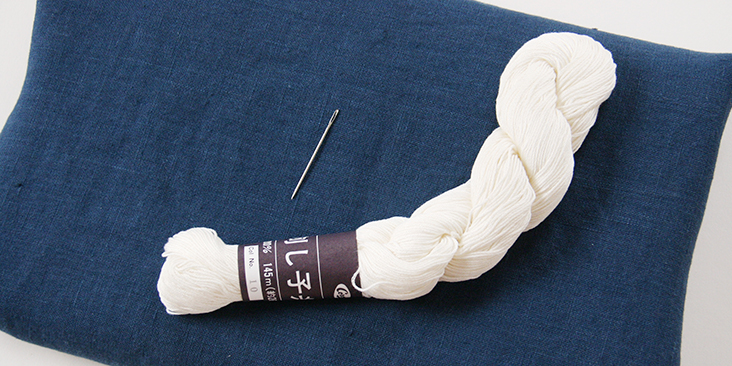
As for the embroidery thread, we opted for a specialty sashiko white thread which is like to perle cotton or embroidery floss. Information technology is a unmarried strand that is thinner and more tightly twisted (so it won't dissever into strands) than the other ii threads and is made of pure cotton fiber and has no sheen. Either thread could be used as a substitute to the sashiko thread, though the finished look will be slightly different.
Here are some examples of embroidery threads used for sashiko:
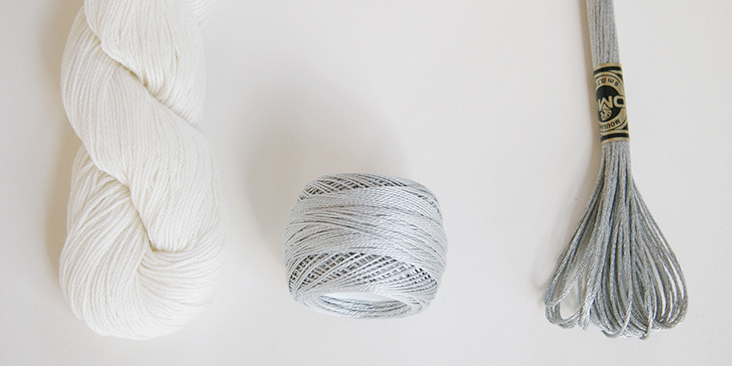
Left: Sashiko thread
Centre: Perle cotton embroidery thread (#eight, preferably)
Right: Embroidery floss (use half dozen strands of floss)
These thread examples are for use on medium weight linen. So if you work with lighter or heavier fabrics, consider using thinner or heavier threads.
Tools
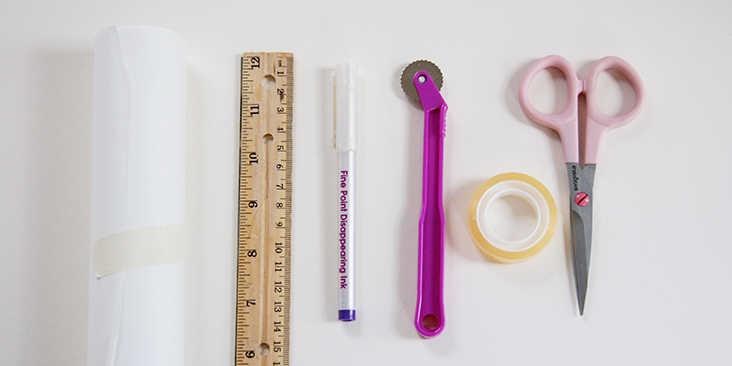
Embroidery/sashiko needle, wax gratuitous chalk tracing newspaper or disappearing ink cloth mark, tracing tool, tape, ruler, scissors. No embroidery hoop is necessary.
Information technology's recommended to use a traditional sashiko needle which is longer than a regular embroidery needle and works best for conveying multiple stitches. Though a sashiko needle is certainly a nice tool to have, you tin can nevertheless achieve cute results with regular embroidery needles.
Patterns
Sashiko designs range from simple directional lines and checks to more complicated interlocking mosaics.
This tutorial features three downloadable sashiko patterns for you to endeavor (click on the name to download the pattern):
- Hishimoyou
- Kakuju- Tsunagi
- Uroko (Fish scales)
Yous will find the full-size printable diagrams for each mode where the different colors will show you lot how to work the sashiko stitch and the directions to follow.
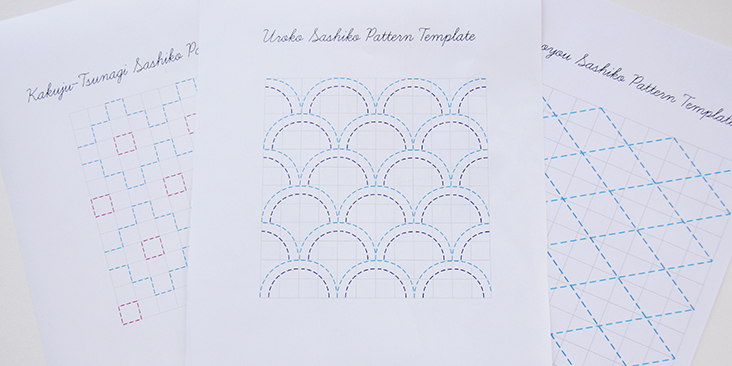
If you are looking for a different pattern, at that place is a large multifariousness of other sashiko pattern templates available online. Or you can use graph paper to make your own patterns. In that location are several simple geometric ideas that you can hands depict and use for any projection. Pre-made sashiko templates and patterns, which permit you to transfer designs directly to the fabric, are also available from craft and online stores.
Once you've chosen an ideal design for your project, you'll demand to transfer it to your fabric to ensure keen and regular stitching. For transferring patterns we recommend using chalk paper and a tracing tool, only you may also use a water-soluble marking pen or a pencil that will disappear after the first wash.
Trace over all of the pattern lines and even though the diagrams bear witness dashed lines, we strongly recommend marking solid lines and and so dividing each line segment into an even number of stitches indicated in the diagram. Draw lightly equally you desire your markings to wash out subsequently, but not too light equally you don't want them to wear off also shortly.
If you are using chalk tracing paper, use some clear tape or weights to secure your material to the tabletop and to foreclose it from shifting while you trace.
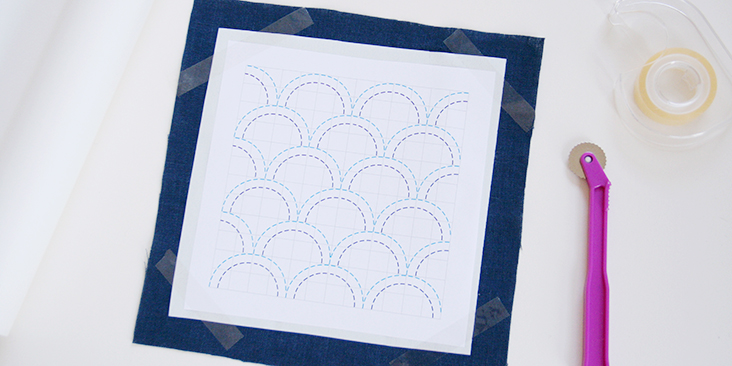
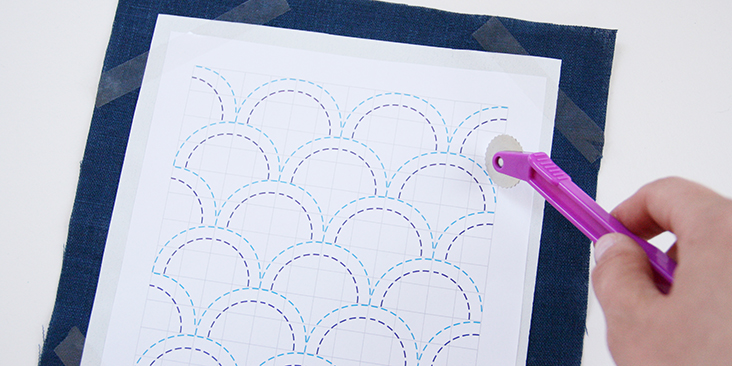
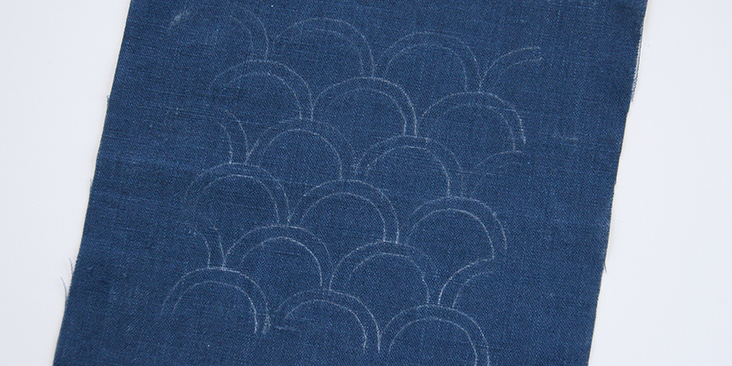
If you need to extend your blueprint, make additional copies and tape them together. When all of the design lines take been transferred, yous are ready to stitch.
The Technique
The sashiko stitch is worked in the same manner as a basic running run up, the technique that nosotros have already covered in one of our tutorials on paw embroidery. The merely difference is that the gap between each sew together must be half the length of a full stitch with the longer sew on the right side of the fabric. And so, the master stitches are longer and the gaps are half of this length.
Sashiko patterns are worked in continuous lines and knots are traditionally not used to start or end a sew equally they might create boosted bulk or go out marks.
Only, for the ease of it, you tin can totally use knots when working on ii layers of fabric and where the reverse of the fabric will not be shown. In which case, all the tails and knots will exist hidden between the layers. For designs where the reverse of the textile will be shown, there's a basic temporary knot often used in embroidery that will piece of work great with sashiko – the away knot. As its proper noun suggests, an abroad knot is tied a few inches away from the surface area where the embroidery begins. The knot is clipped later working the embroidery, and the tail is then threaded through the stitches on the back side of the fabric. Additionally, to secure the thread you can overlap a few stitches.
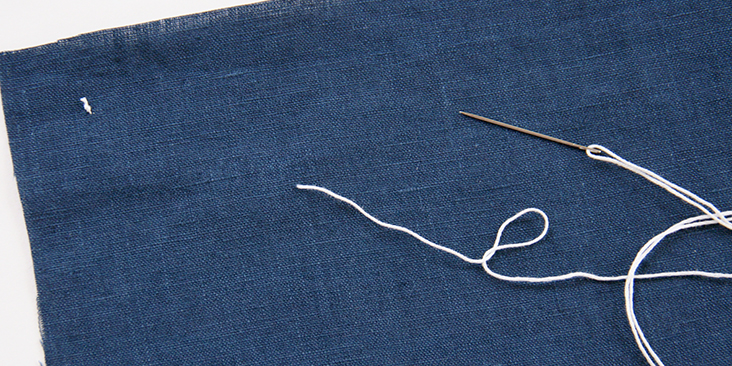
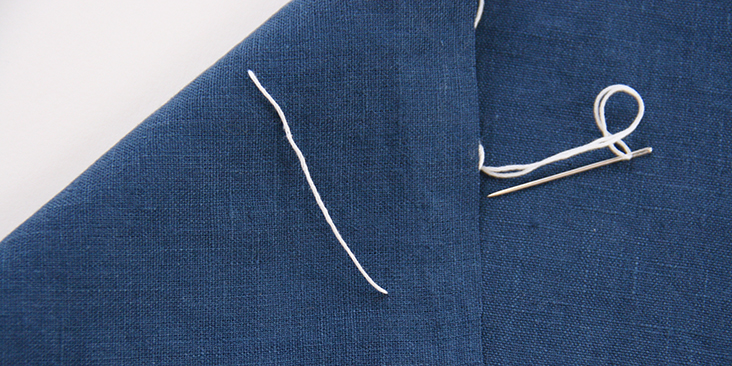
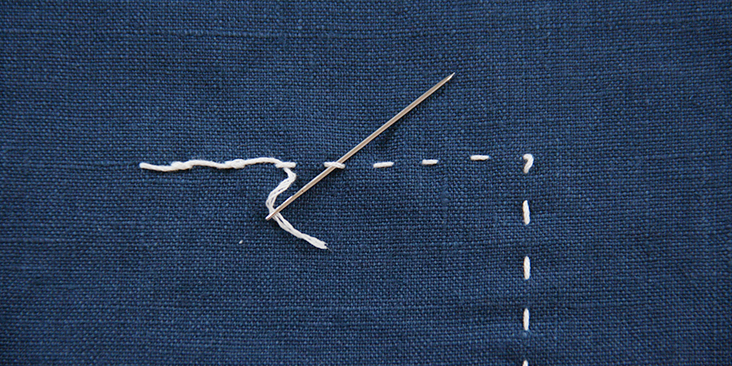
To brainstorm your project, cut a piece of thread that is long plenty to go from one end of the row of your stitches to the other. Create an away knot a few inches abroad (3 to 5) from the desired starting point, then insert the needle into the fabric and cast on multiple stitches on the needle without pulling the thread through. The reason you do not exercise one sew at a time is because the thread volition tend to twist. Proceed your spacing at a ane:2 ratio and every bit even as possible.
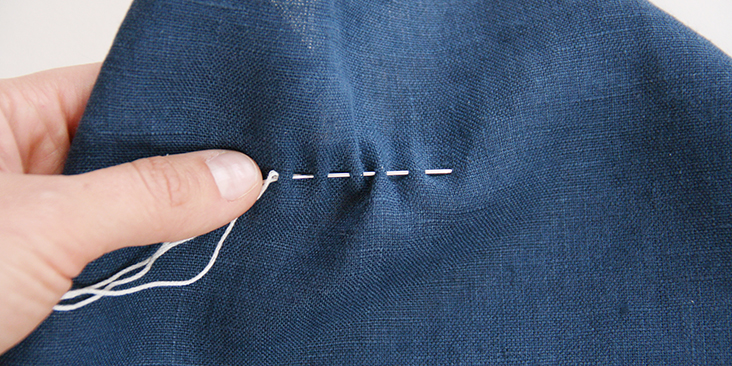
Afterwards you have several stitches on the needle, whatever number you are comfy with, push the needle through the fabric and pull the thread all the mode through. Be careful that you don't pull the thread too tight, which will cause the cloth to crease.

Piece of work all parallel lines kickoff, and then change direction and work another set of parallel lines. A run up is to be kept continuous every bit far every bit possible.
i. Kakuju-Tsunagi
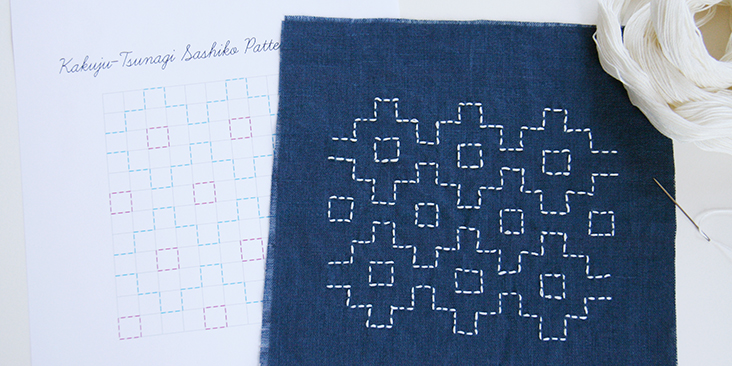
This is a square based pattern that is very easy to make and stitch. Run up each set of steps at a fourth dimension. Then, stitch each square at a fourth dimension.
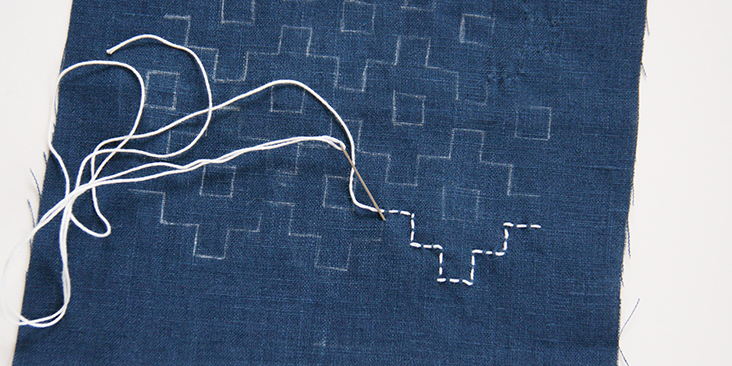
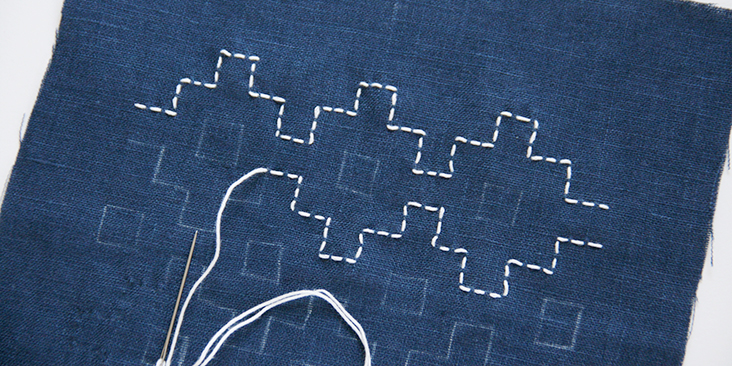
2. Hishimoyou
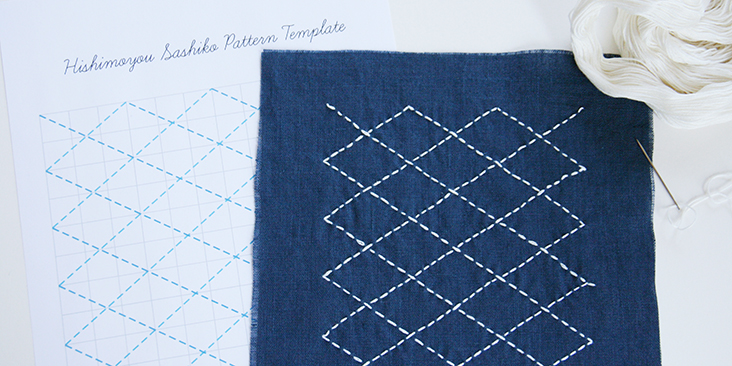
Hishimoyou is a diamond-based pattern. To complete this pattern, work on one prepare of parallel diagonal lines offset and then on the other.
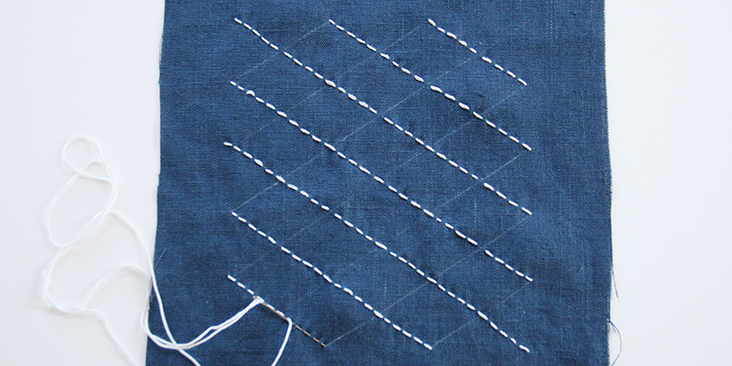
3. Uroko
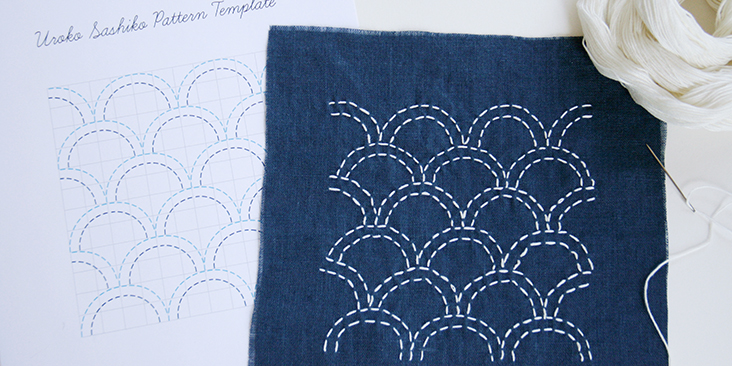
Uroko (Fish scales) is a circle based design. It is pretty easy to brand but tin take a little do earlier the curves can be learned to be stitched neatly and with precision.
Sew together each horizontal row of semi circles from one finish to the other. The stitches should expect like mirror images where the curves meet.
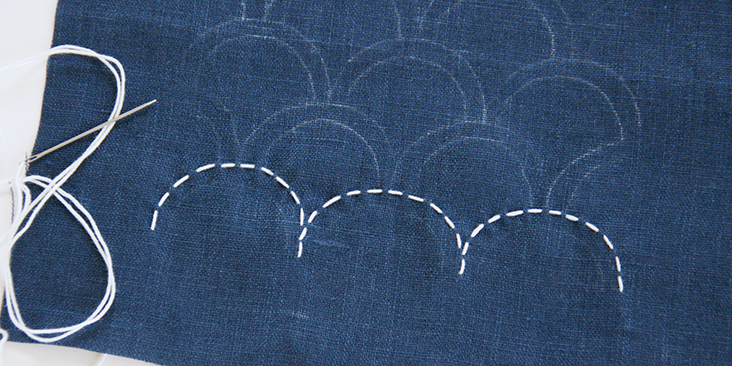
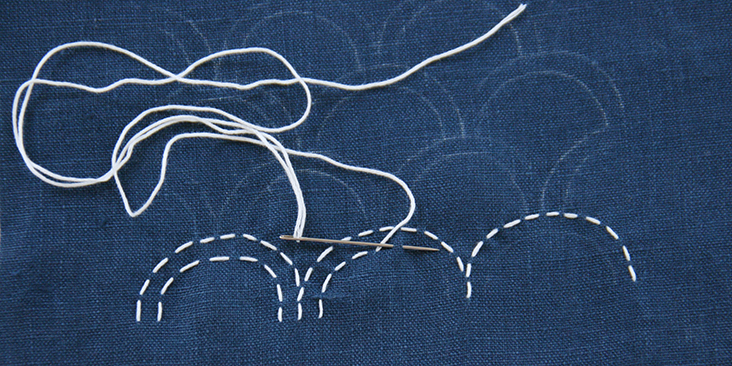
Useful Tips
Here are some useful tips to follow to achieve clean and elegant cease results:
1. Always prewash and dry your fabric before starting a project.
two. Keep your stitching every bit even as possible and respect the space ratio.
three. Don't pull the thread too tight as it might cause the fabric to crease.
4. When working on a pattern where the lines meet, space the stitches evenly and so that they don't bear upon or cross each other. There should exist a small open infinite at the point where the lines would usually encounter. This will brand the pattern expect more than elegant.
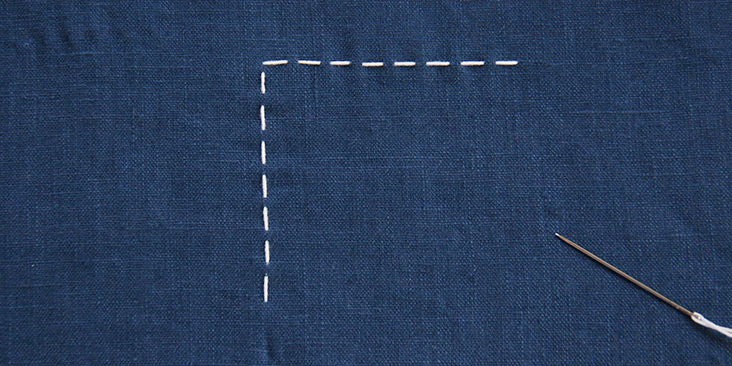
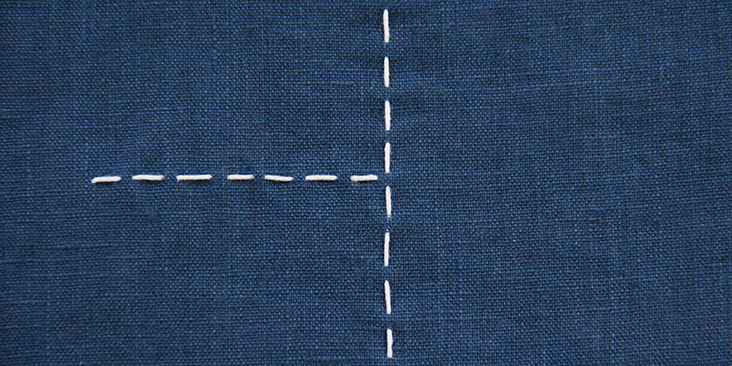
5. For a nicely defined 45-degree angle, both stitches must end right at the turn of a corner.
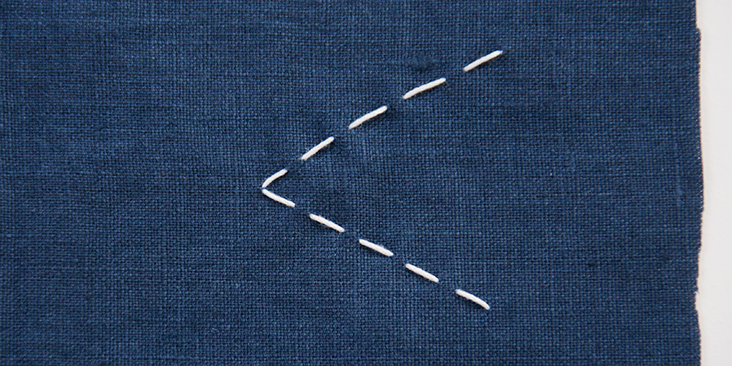
half-dozen. When turning a corner, get out a small yarn loop on the wrong side of the fabric to help prevent it from puckering.

7. To move from one department to another, you tin can acquit the thread beyond the dorsum of your work if the altitude is about an inch or less. Simply brand certain that it stays slightly loose so the cloth doesn't pucker.
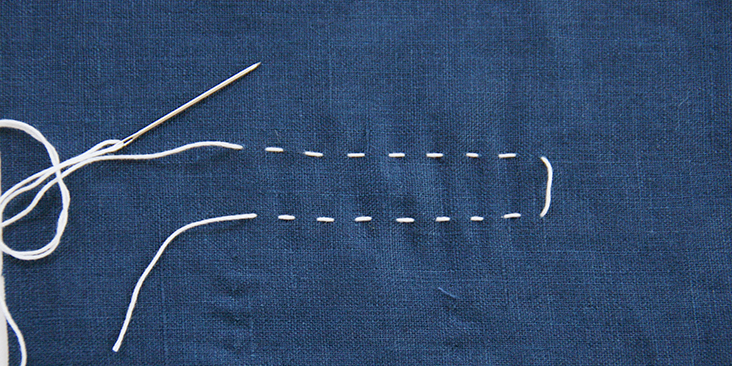
8. And lastly, try to be mindful of where the pattern lines meet and exercise a picayune preplanning when you are coming to a junction, turning a corner or changing a direction.
At present that you lot know all the basic sashiko tips and techniques, we invite yous to delve into the wonderful world of sashiko and create some totally unique and elegant projects. To give you some ideas on how to utilise sashiko in garment making, nosotros are preparing a little tutorial for an embroidered apparel that we will share with you in our next mail. In the meantime, you can do your sashiko skills by creating the smallest of quilt projects – quick and like shooting fish in a barrel pot holders!
0 Response to "Modern Sashiko Embroidery for Men's Fashion"
Post a Comment